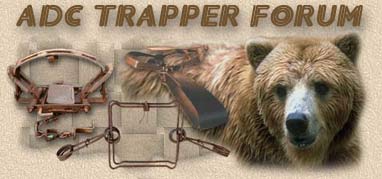"Killer" is really an improper media hyped term. All bees are capable of inflicting lethal harm. A single sting from a honeybee of any of the 25 or so known subspecies can kill in the case of anaphylaxis.
The so called killer bee is better referred to as to what it really is the africanized bee or a honeybee that retains a high percentage of DNA from Apis mellifera scutelatta and is reflected in it's extremely defensive nature. It is in fact no more or less dangerous than any other subspecies of honeybee on a sting by sting basis, if anything less so than most european subspecies with ever so slighty milder venom. Even africanized is a misnomer when applied strictly to descendants of the imported scutelatta subspecies as the dark continent is home to at least a half a dozen other subspecies of the Western Honeybee, two of which monticola and unicolor are particularly noted for extreme gentleness. Monticola in particular has been sought ought for inclusion in the breeding programs at Buckfast Abbey in England that began under Brother Adam in a search for a productive gentle bee that had resistance to the acarine mite. To this day the monticola is still used for backcrosses by breeders of the buckfast bee.
The bee referred to as "killer" is reputed to be the offspring of a couple dozen queens collected in the wild by Dr Kerr of Sao Paulo, Brazil. Dr Kerr was seeking to develop a production strain of commercial honeybees that were better suited for the tropical climate of Brazil than the honeybees that were already present in Brazil. The bees that were there were descendants of european subspecies brought by the original european colonists (no species or subspecies of honeybee are native to the Americas). Among these european bees were Apis m. mellifera German/French/English Dark Bee, Apis m. iberica Iberian/Spanish Bee, Apis m. ligustica Italian Bee, Apis m. lamarki North African Bee, Apis m. cyprioti Cyprus/Middle Eastern Bee, Apis m. caucasus Caucasian Bee, Apis m. carniola Carniolan Bee.
There are still many facts of this so called release into the wild of dangerous bees that are still in dispute to this day ranging from exactly which subspecie(s) Dr Kerr imported (possible Apis m. capensis Cape Bee) to whether he was in fact the first to do so (he wasn't, the USDA beat him to it by at least thirty years by importing african queens directly to Baton Rouge, LA and then later disseminating offspring of these queens to breeders across the country), to whether the release was accidental or intentional, even to the actual immediate after effects of said release. What is known at this late date being able to look back through a more historical perspective is that Dr Kerr and the Brazilian government were often at odds politically and the full truth of who did what when may never be known.
What is known of scutelatta are the traits that have made it extremely successful at survival. This subspecies has several adaptations to it's subsaharan origin that has stood it well as an immigrant to our shores. She is an early riser to beat the heat and in so doing her drones and queens fly earlier and beat the later rising europeans to early worm when it comes to breeding. She flies further afield to gather more resources and has a very high propensity to cast multiple reproductive swarms to better survive a harsh enviroment this combined with a well known trait called abscond swarming where the colony as a whole packs it up and moves to greener pastures has allowed the rapid colonization of the americas by this bee and to do so while retaining a large percentage of it's original DNA.
It is this DNA that has caused the real problems with this subspecies. One of it's strong survival traits is extreme defensiveness. On a continent populated by large predators extreme defensiveness is the ultimate asset. Where the typical european colony of honeybees will rally a dozen or so worker bees to chase off offenders the typical africanized colony rallies the entire workforce to inflict maximum chastisement to offenders. Also while many of the european subspecies will content themselves with less lethal to themselves defensive behaviors like headbutting (and in some actual biting as opposed to the suicidal sting) the subsaharan subspecies readily gives her all in defense of the colony. Combine this with the fact the almost all of the subspecies north of the sahara have been kept in captivity for eons and old methods of harvest required the killing of the bees and I think we can surmise just which colonies were selected to die in the fall of each year so it is no wonder that the europeans are fairly docile in comparision to the still truly wild bee of africa.
Of course the pure european strains are still fully wild animals (yes, even though we keep them and breed them they ain't pets) and are still fully capable of reacting extremely badly to the slightest of provocations. In the beekeeper circles that are still familiar with the old "dutch" bee ,basically the A. m. mellifera mutts that were common in the US prior to the take over american beekeeping by the A. m. ligustica Italian Bee, the "dutch" bee is remembered as a particularly nasty bee to work with.
Last edited by warrior; 04/16/13 04:33 PM.



![[Linked Image]](8a3gq5-1.jpg)
